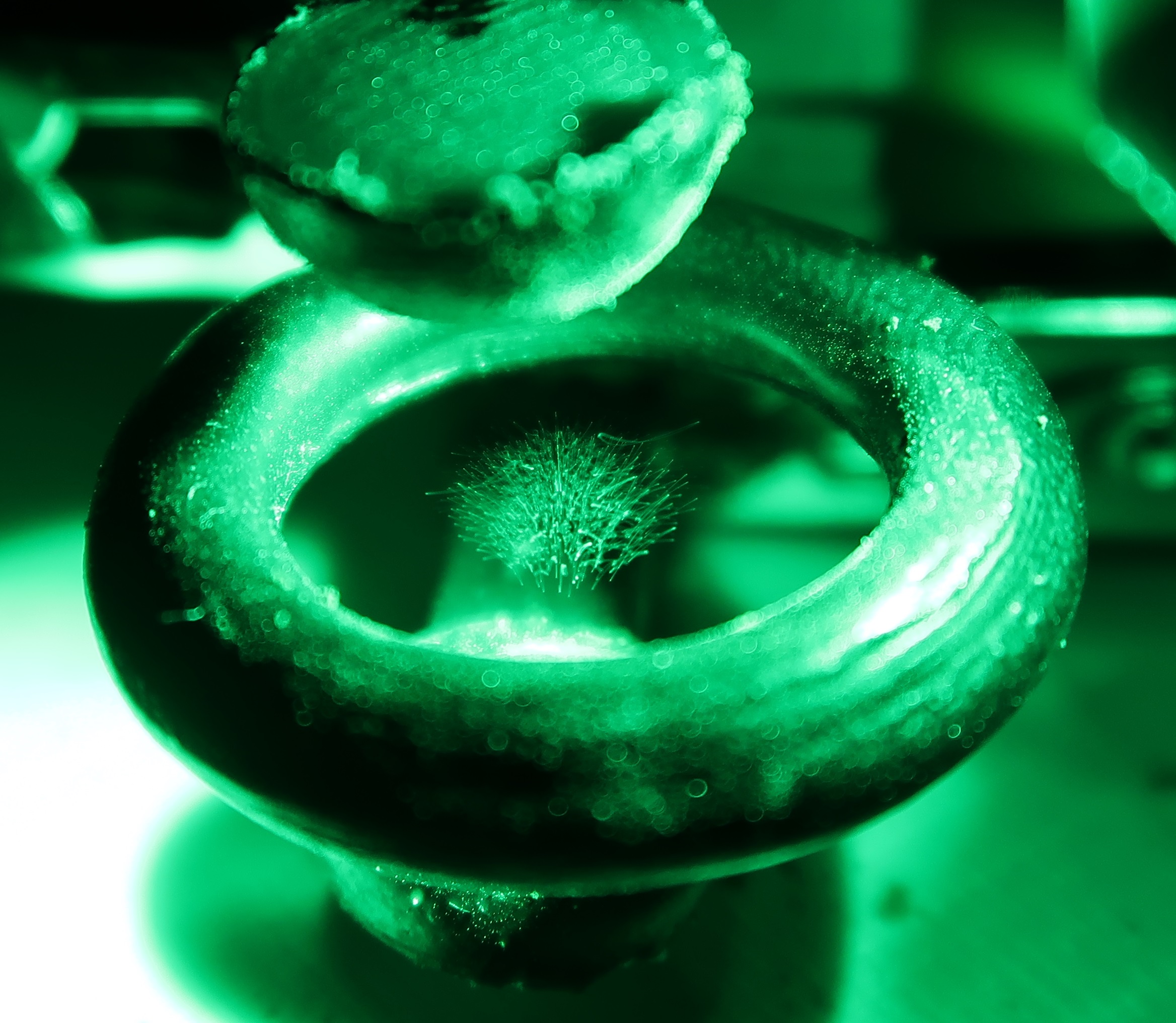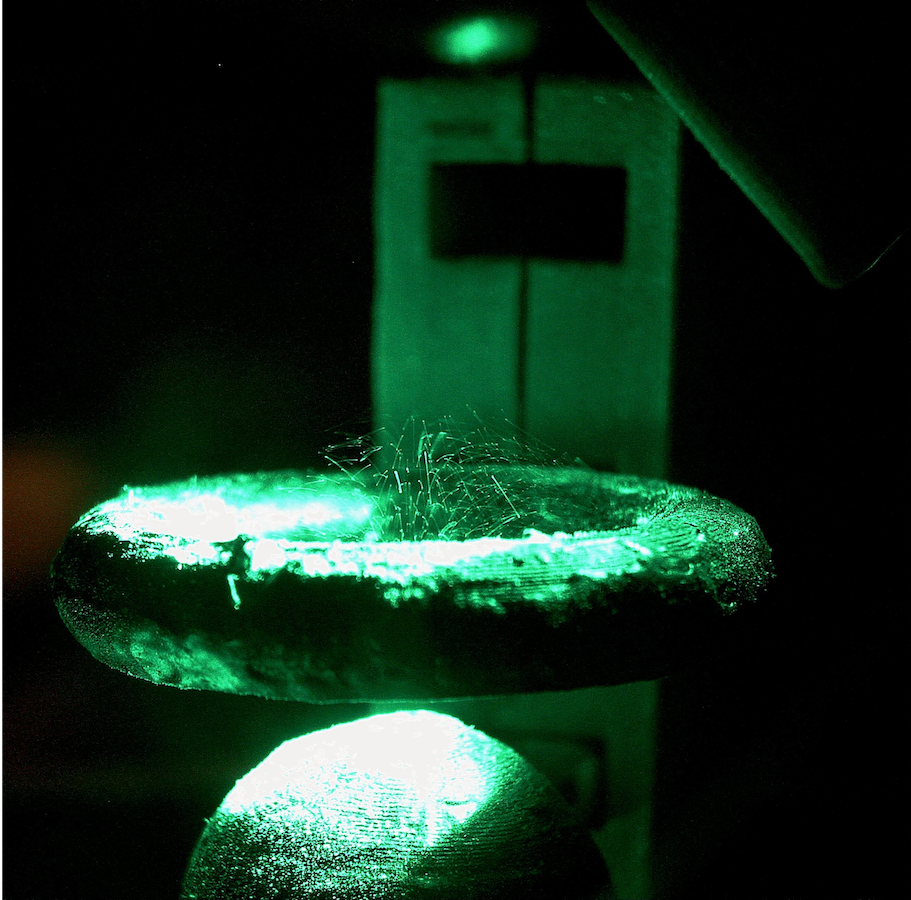3D-Printable Quadrupole Ion Trap
Quadrupole Ion Trap
Quadrupole ion traps are modern and versatile research tools used in mass spectrometers, in atomic frequency and time standards, in trapped ion quantum computing research, and for trapping anti-hydrogen ions at CERN's GBAR experiment. We present an open hardware 3D-printable quadrupole ion trap suitable for the classroom, which is capable of trapping electrically charged "macroscopic particles" such as cinnamon of lycopodium spores. We also provide student worksheets developed in an iterative design process, which can guide students while discovering particle traps. The quadrupole ion trap operates using a 3 kV 50Hz alternating current power supply and uses an astable multivibrator circuit to illuminate the spores, using the stroboscopic effect to exhibit their movement. In addition, we provide worksheets to help students discover the physics behind these traps. The trap can be used in teaching laboratories to enhance high school and university students’ understanding of electric fields and their applications.
The 3D-printable model
We developed a 3D-printable quadrupole ion trap suitable to trap macroscopic electrically charged objects such as lycopodium spores or cinnamon. Here, our paper "3D-Printable Model of a Particle Trap: Development and Use in the Physics Classroom" includes detailed building instructions and ideas for the classroom use. In addition, you can watch a video of the assembly process.
Material needed to build the trap
A detailed list and all .stl files can be found in the DIY manual on Zenodo (DOI 10.5281/zenodo.1473292). This folder also includes modifiable design Fusion 360 files.
- 3D-printed components
- electronic components (< 50 EUR)
- conductive paint & brush
- soldering iron
Material needed to operate the trap
A detailed list can be found in the DIY manual on Zenodo (DOI 10.5281/zenodo.1473292)
- lycopodium powder or similar (approx. 10 EUR)
- wooden skewers to place the spores inside the trap
- 3 kV AC voltage (50 Hz), for example, 20 V AC power supply and transformer 1:200 (coils with N1 = 50, N2 = 10000)
- Multimeter
- optional: perspex tube to protect the trap from air movement
Suggestions for educators
Attention - high voltage
We can only provide general safety advice since the overall setup of the trap once built is in the hands of the user. It is the obligation of the user, teacher or demonstrator to verify and make sure that the device is operated under safe conditions following all relevant regulations which apply in their particular case (i.e. schools). We recommend that students only perform this experiment under the supervision of a teacher/demonstrator.
Classroom use
There are different ways to use this trap in your classroom. The primary use case of this hardware is high school or undergraduate classroom settings. Therefore, the operation is designed to be as simple to build and as safe to operate as possible. After connecting the power source, the voltage is increased to V = 2.0 kV. Then, the room lights are dimmed and the LED illumination is switched on. A pair of wood skewers are dipped into the lycopodium powder and rubbed together right above the ring electrode of the trap. If no spores are suspended in the trap, the applied voltage is increased and the procedure repeated. The image below demonstrates the appearance of the spores under continuous lighting.

It is challenging to explain electric quadrupole fields to high-school students. Nevertheless, we provide a student worksheet to help students connect the trap to a transformer, to levitate spores and to compare the elctric field of the trap with the electric fields of point charges. We also included more information about the quadrupole ion trap that is used in antimatter research at CERN. The student worksheet and the teacher manual which includes solutions and more information can be found on Zenodo (DOI 10.5281/zenodo.1473292)

Watch a short teaser of the instruction video on Twitter or Facebook
🛠 Feeling trapped in your apartment?
— CERN (@CERN) June 24, 2020
Today, let’s trap cinnamon in electric fields and find out how particle traps work. Ready? Go! ⤵️ pic.twitter.com/7Jc8eK3aJk
Watch (and download) a video of the assembly process from CERN CDS Videos